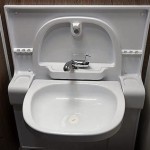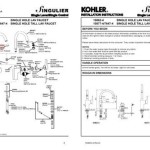How To Remove Mould From Grout In Bathroom
Mould growth in bathroom grout is a common problem due to the consistently damp environment. Not only is mould unsightly, but it can also pose health risks, especially to those with allergies or respiratory conditions. Effectively removing mould requires understanding the process and utilizing the right tools and techniques.
Identifying Mould Growth
Mould often appears as black, green, or brown spots or patches within the grout lines. It can also manifest as a fuzzy or slimy texture. A musty odour in the bathroom can also indicate hidden mould growth. It's important to address mould growth promptly to prevent it from spreading and causing further damage or health issues.
Necessary Safety Precautions
Before beginning any mould removal process, it's crucial to take appropriate safety measures. Wear protective gloves to prevent skin contact with the mould and cleaning solutions. Eye protection is also recommended, as splashes can occur during cleaning. A dust mask or respirator is highly advisable, especially when dealing with larger areas of mould, to avoid inhaling mould spores. Ensure proper ventilation in the bathroom by opening a window or using a fan.
Natural Cleaning Solutions for Mould Removal
Several natural cleaning solutions can effectively remove mould from grout without harsh chemicals. White vinegar is a common household item with strong antifungal properties. Baking soda is another readily available option with mild abrasive qualities that help to scrub away mould. Hydrogen peroxide is an effective disinfectant and bleaching agent that can kill mould and lighten discoloured grout. These natural solutions are often preferable for individuals sensitive to chemical cleaners.
Preparing the Grout for Cleaning
Before applying any cleaning solution, it's beneficial to prepare the grout. Remove any loose debris or dirt from the grout lines using a stiff brush or a vacuum cleaner with a crevice attachment. This allows the cleaning solution to penetrate the grout more effectively. Lightly spraying the grout with warm water can further help to loosen the mould and prepare it for cleaning.
Applying the Cleaning Solution
When using vinegar, apply it directly to the grout lines using a spray bottle or a saturated cloth. Alternatively, create a paste by mixing baking soda and water. Apply the paste to the affected areas and let it sit for several minutes. For hydrogen peroxide, dilute it with equal parts water and apply it to the grout. Allow the chosen cleaning solution to dwell on the grout for a period, typically between 15 and 30 minutes, allowing it to work on the mould.
Scrubbing the Grout
After the cleaning solution has dwelled, use a stiff-bristled brush, such as a grout brush or an old toothbrush, to scrub the grout lines vigorously. The scrubbing action helps to dislodge the mould from the porous grout material. Pay particular attention to areas with heavy mould growth. For stubborn stains, repeat the application and scrubbing process as needed.
Rinsing and Drying the Grout
Once the scrubbing is complete, thoroughly rinse the grout with clean water to remove any remaining cleaning solution and mould debris. Use a clean cloth or sponge to wipe away excess water. Adequate drying is crucial to prevent mould regrowth. Ensure the bathroom is well-ventilated to promote drying or use a fan to circulate air. Consider leaving the bathroom window open for several hours to allow for complete drying.
Preventing Future Mould Growth
Regular cleaning and proper ventilation are key to preventing future mould growth in bathroom grout. Wipe down shower walls and floors after each use to remove excess moisture. Use a squeegee to remove water from tiled surfaces. Ensure adequate ventilation by running the bathroom fan during and after showers. Regularly inspect grout lines for any signs of mould growth and address them promptly. Consider sealing the grout with a sealant designed for bathroom use to create a barrier against moisture and prevent mould from taking hold.
Commercial Mould Removal Products
For particularly stubborn mould or large infestations, commercial mould removal products are available. These products typically contain stronger chemicals, so carefully follow the manufacturer's instructions for safe and effective use. Always wear appropriate protective gear, including gloves, eye protection, and a respirator, when using commercial mould removers. Ensure adequate ventilation during and after application. If uncertain about using commercial products, consult a professional cleaning service specializing in mould remediation.

How To Clean Mold In Shower Grout Tips And Tricks Certified Care

How To Remove Mold From Shower Caulk Or Tile Grout Fabulously Clean

How Do I Remove Black Mould From Shower Floor

How Can I Clean Mildew From Grout Puroclean Hq

What Is The Best Way To Clean Shower Grout Mold Anita S Housekeeping

Black Mold In The Shower How To Clean It Kitchen With Matt

Cleaning Mrs Hinch Fans Share Easy Ways To Clean Tile Grout Express Co

How To Fix Mouldy Grout Between Tiles Eurotiles Bathrooms

Grout Mould How To Effectively Banish From Without Causing Damage Tiles Express Co

How To Clean Grout Cleaning Stains
Related Posts







